When starting a blog, our recommendation for most people is WordPress with Hostinger because it has great features and affordable plans and is easy to use and learn. You can get started with Hostinger for 80% off with our Quick Sprout code.
Starting a lifestyle blog is fun, flexible, and exciting. You get to talk about whatever you want and get creative, sharing your life and ideas with your audience. And if you’re lucky, you can turn your blog into a career and make your passion a successful income.
But because lifestyle blogs don’t have as clearly defined a niche as other blogs do, it can be hard to set one up that doesn’t quickly become overwhelming. Getting the foundations right is important for making sure your blog has the potential to stay successful and fulfilling. Read on for our step-by-step guide on starting a lifestyle blog that stays fun and relevant.
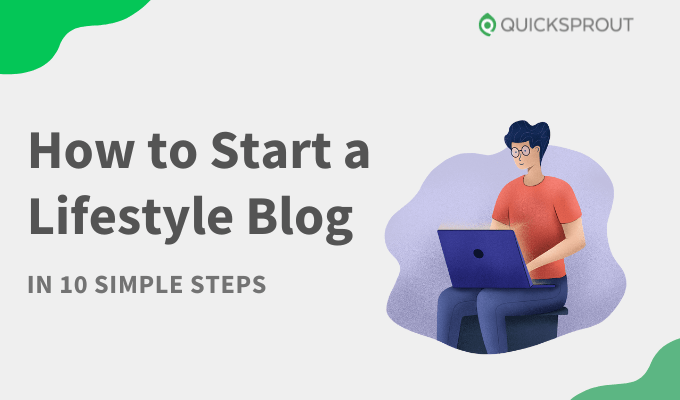
The 5 Best Blogging Platforms For Starting a Lifestyle Blog
We’ve researched the best blogging platforms for starting a blog that is affordable, easy to use, flexible, and trustworthy. Here are our top picks based on all the ones we tried:
- WordPress with Hostinger — Best overall
- Wix — Best for beginners building a professional blog
- Squarespace — Best for artists and designers
- LinkedIn – Best for Networking
- Medium – Best for Writing to a Built-In Audience
You can read the full review here to choose the best blogging platform for your goals.
Start a Lifestyle Blog in 10 Easy Steps
Setting up a blog is easy if you take it step-by-step, research, think strategically, and use the right tools. Here are the steps we’ll be breaking down in our tutorial:
- Get Signed Up With WordPress on Hostinger
- Do Market Research
- Choose a Blog Name
- Set Up Your Site and Activate Your SSL
- Get a Theme
- Customize Your Blog
- Plan Your First Few Posts
- Add Plugins
- Add Legal Pages
- Set Up Social Media
For this tutorial, we’re using Hostinger because our research found that it’s the easiest for new bloggers, comes with templates and security features, and has some of the best rates for hosting plans. You can get started with Hostinger for 80% off with our Quick Sprout code.
Step 1: Get Signed Up With WordPress on Hostinger
The first thing you need to do when starting a lifestyle blog is get set up with a hosting platform. In our case, it’s Hostinger.
Go to Hostinger’s home page, and sign up for an account by clicking on Hosting in the menu bar and then WordPress Hosting.
Then, choose your hosting plan. We recommend selecting the WordPress Starter Pack because you’ll get access to a free domain for the first year, and it has everything you need to run a blog.
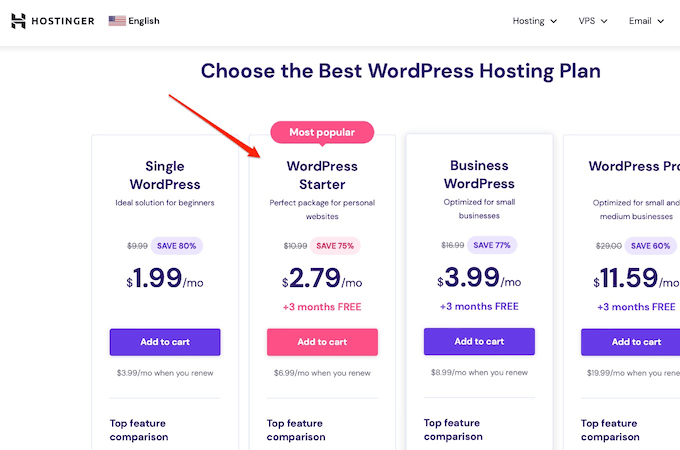
Once you’ve made your choice, add it to your cart, and choose how many months you want to subscribe for. You get a bigger discount the longer your plan is, but if you want to start with just a year, that’s fine too.
Next, add your payment information and buy your plan.
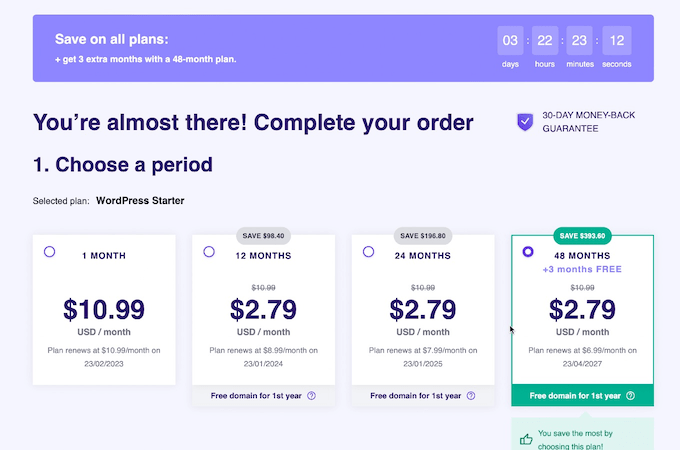
You can now log in to your Hostinger dashboard to see your plan and the option to Set Up.
We’ll cover that in a moment. First, there are a few other steps you need to complete.
Step 2: Do Market Research
The next thing you’ll need to do before you even decide on a name or a theme is to get clear on who your blog will be for.
With a lifestyle blog, you are dealing with the extra challenge of having a broad niche. You’re not just talking about one thing, like food, travel, or fashion—you’re talking about them all. This means that getting clear on WHO your blog is for and which readers will want to live a similar lifestyle is crucial.
So, for example, is your lifestyle blog focusing on outdoor living? A lifestyle based mostly around being active, spending time in nature, eating clean, and staying fit? Then your content needs to be more targeted towards that type of reader, all the way down to the type of language you use.
On the flip side, if your content focuses on minimalism with capsule wardrobes, no-waste cooking, or simple furniture, you will target a different audience.
Let’s take a look at examples of two very different lifestyle blogs:
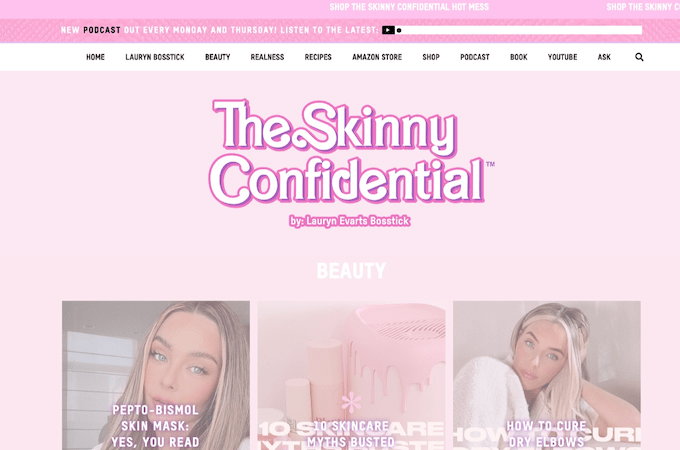
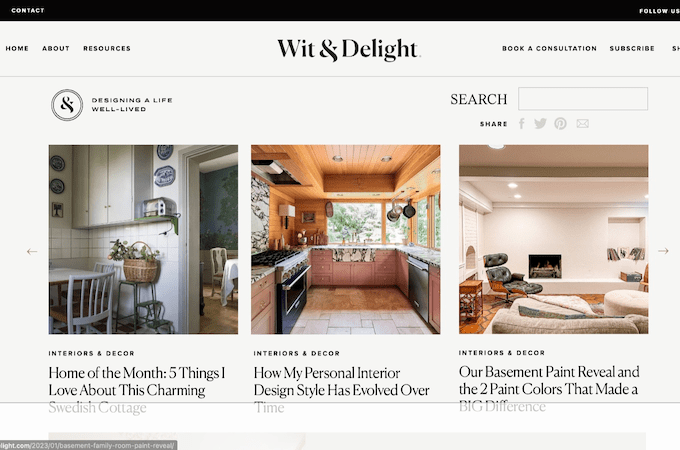
We can see that one is targeted toward a younger audience, maybe more towards women and that the topics, language, and branding are all done with that type of reader in mind. The other is more understated, aimed at a very different group of people, covering more conservative topics.
Both are great, but they work because they understand their audience. You need to get clear on who your target reader is and spend some time researching the topics they are interested in. What do they talk about on social media? What content do they like and share?
You also want to think about the kind of topics they’ll be interested in reading about and that you’ll be interested in writing about. Once you know who will read your blog and have created an avatar for your target reader, you can move on to the next step.
Step 3: Choose a Blog Name
Once you know who your blog will be aimed at and what you will write about, it’s time to choose your blog name. Your blog name and domain name don’t have to be the same, but it’s better if they are.
You want to choose a name that reflects your brand, but these are the other things you want in a name:
- A name that is relevant to your target audience
- Something short and easy to remember
- A name that is easy to spell and type
- A name with an available domain
- A .com domain name (not a .net)
- A blog name that is available as a social media handle on all platforms
- A unique name that isn’t too close to any other blogs
Hostinger has a domain name search tool to help you check if your domain is available.
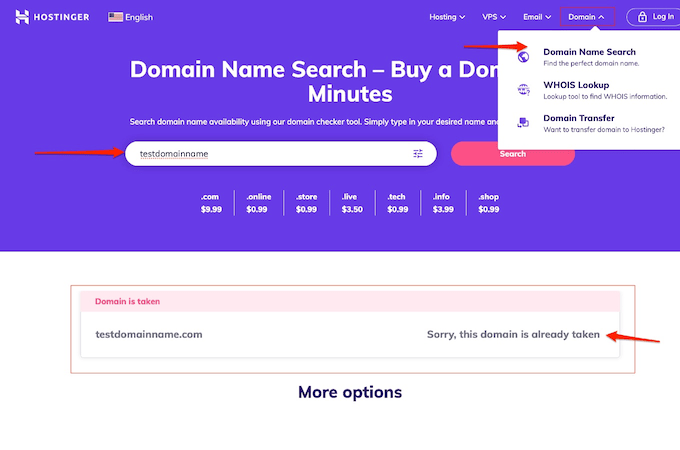
One thing to note is that no matter how much you like a name, if someone else has a similar name, go with something else. Anything too close to an established blog name can get you in trouble when it comes to copyright or trademark.
If you create a distinctive blog name from the start, you don’t risk having to change it later on and losing the brand or audience you’ve built.
Once you’ve chosen a domain name and verified that it’s available, go to Set Up in your Hostinger dashboard and claim your free domain. Then, choose Build a New Website and move on to the next step.
Step 4: Set Up Your Site and Activate Your SSL
Once you’ve set up an account with Hostinger and chosen a name, it’s time to set up your site.
In your Hostinger Setup, once you select Build a New Website, you’ll be asked to choose a hosting platform. Select WordPress, then set a login and password for your WordPress account.
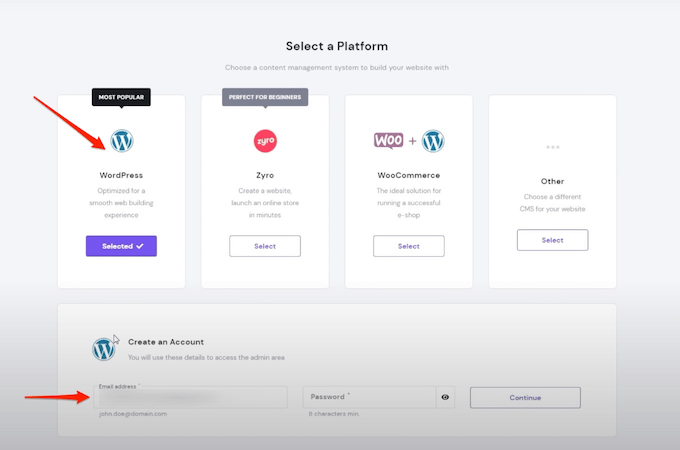
You can then choose your theme. If you look in the search bar, you can browse through different layouts, including ones specifically for blogging. We’ll look at how you can edit or choose a better theme later in this tutorial, but for now, choose a premade one and continue.
Once you choose your theme, you’ll get to a page that says your site is ready. Before you go to your WordPress Dashboard, you’ll want to ensure your SSL certificate is installed. Go to the option that says Control Panel and click Manage Site.
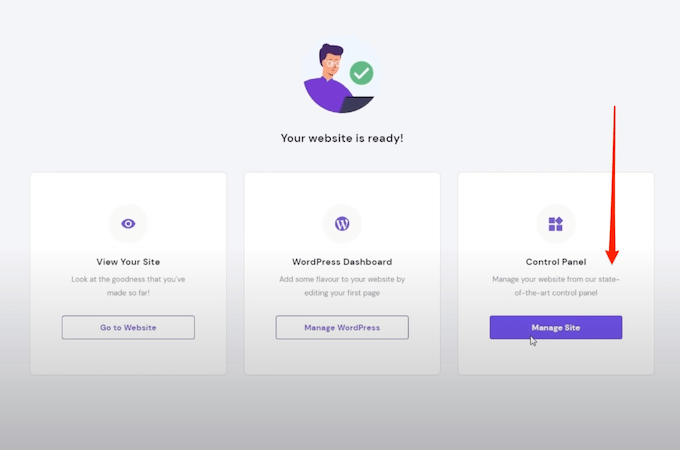
If you need to set up your SSL, you’ll see a yellow button that says Finish Domain Registration. Click it. You’ll then be asked to add your personal details like name, address, phone number, etc. When you’re finished, click Set Up, and then Continue to Control Panel.
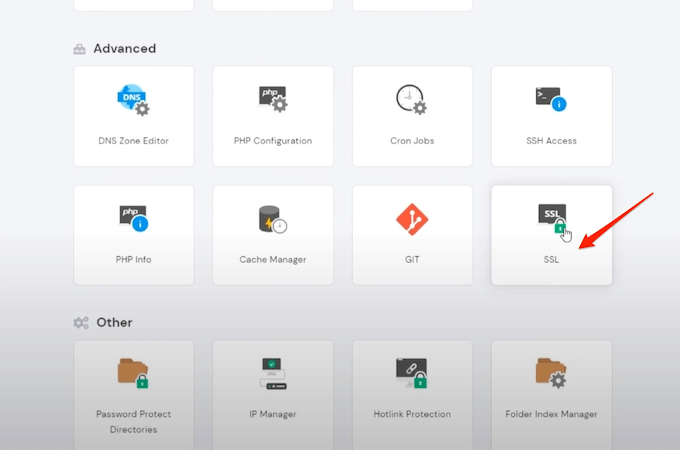
Then go to Hosting in the top menu bar, and click Manage next to your website. Next, from the Hosting Account page, scroll through the different icons until you reach the advanced section, where you’ll see the SSL icon. Select it.
Then click Set Up, then Activate, then Install. Your site is finally set up and ready to be customized!
Once you’re finished, you can move on to the next step.
Step 5: Get a Theme
Once you’ve finished setting up the technical parts of your blog, you can move on to making your blog look the way that you want,
For many blogs, the appearance doesn’t really matter, and the content is king. However, when it comes to lifestyle blogs, there’s a little more pressure to create a brand and a full experience for people when they visit your blog.
When choosing a new theme, you have a few options.
You can go to your WordPress dashboard by adding /wp-admin to the end of your URL. If you go to Appearance, you’ll have the option to choose a new theme from the WordPress library. These can be paid or free, but they tend to be a little simplistic.
If you want something a bit more complex, you can buy a theme from a third party. You can easily buy themes from Etsy or stores like Hello You Designs.
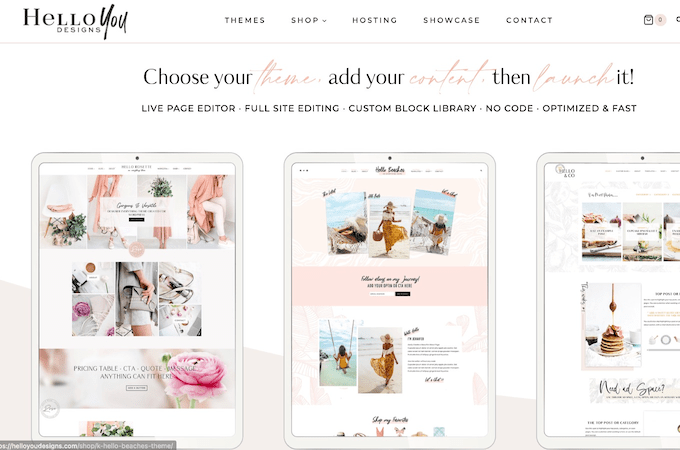
The prices can range from $10 up to $100+, but you can choose whatever suits your blog. Once you buy these themes, you can upload them to your site by going to Appearance, Themes, then Upload. They’ll be detailed instructions for the seller of your theme, walking you through how to migrate it to your site.
If you want to give yourself a real challenge, you can try building your own theme with a drag-and-drop site builder like Elementor or Divi. These offer lots of flexibility on how your site will look, but they are much more compact and time-consuming, so we don’t recommend them for new bloggers.
Once you’ve chosen a theme and you’re happy with it, you can move on to step 6.
Step 6: Customize Your Blog
Now that you’ve chosen a theme, you can start to customize your blog.
This includes changing the images to your own or at least to stock photos that reflect your branding and audience. You also need to change the content and the copy on the theme. For example, changing the menu content or the buttons, the about me copy, or the home page intro.
This can be a little tricky if you don’t know too much about copywriting, but if you browse through blogs you admire, you should get an idea of what kind of content people usually share on these pages. Of course, copying is never okay, but it’s fine to take some inspiration for your own writing.
You can also play with creating a brand color scheme here and even creating logos with a free tool like Canva. A great tool for creating a brand color scheme is Coolors, which can help you generate color palettes and find colors that go together.

Once you’ve added, copied, and customized all your blog pages, you can move on to the next step.
Step 7: Plan Your First Few Posts
The next step is to plan out what you’ll write about.
You can launch a site without adding content, but then you’ll have nothing to show your audience or post on social media.
Planning posts is a good way to avoid writer’s block down the line. As long as you plan posts that can relate to other ones (known as a site map), you’re on the right track. You want to make it easy for your audience to stay on your blog and move from post to post.
Spend some time thinking about which posts you want to create first. What is very relevant and helpful for people in your niche? What is the essence of your brand? Try to create evergreen posts (not trend pieces, but posts that will stay relevant) that are central to your brand.
For example, if you are going to blog about minimalism, you might have a few core posts about what minimalism is or how to become a minimalist. These will probably be the first things people look for on your site and will always be relevant to your audience. Then, plan the rest of your content from there based on what can be linked to the post.
Once you’ve planned at least five pieces of content, you can sit down and write first drafts for them. You can come back to these and edit as you go, but they’ll make it easier for you to plan social media content once you’ve launched your blog.
Step 8: Add Plugins
Next, you need to add some plugins to your blog.
Plugins will help you add extra features to your site, like pop-ups, sticky menus, or quizzes. Some plugins will already be included in WordPress, but if you need other plugins for your site, you may have to download them from the plugin store.
You can see your active plugins in your WordPress dashboard by looking for plugins in the menu. You’ll then see a list of the plugins you already have and a button at the top of the page that says Add New.
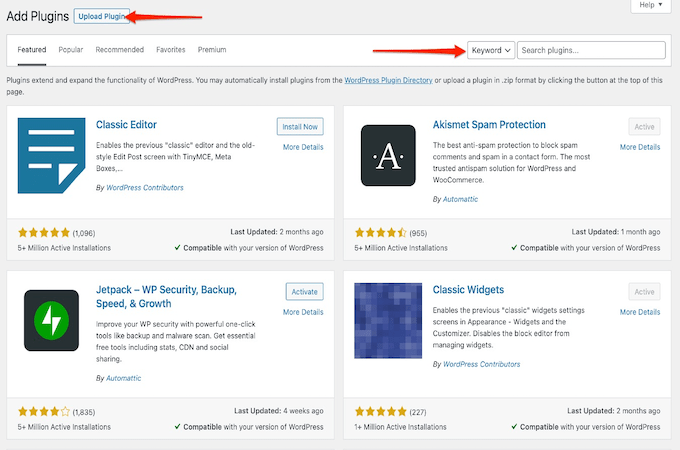
If you click through to Add New, you can search different plugins or upload your own. You can include anything you want, although you may want to start by keeping it basic, as too many plugins can slow down your site. Here are our recommended essential plugins you need for a blog:
- Akismet Anti-Spam (Removes spam comments)
- WP Fastest Cache (Speeds up your site)
- Updraft (Backs up your site)
- Yoast SEO (Helps with SEO)
- Cookie Notice (Makes you GDPR compliant)
You can add as many plugins as you need, depending on what features you want for your blog. If you want help choosing plugins, we have an extensive guide to the best WordPress plugins here.
Once you’ve added your plugins, you can move on to the next step.
Step 9: Add Legal Pages
It’s easy to overlook legal pages, but you shouldn’t.
These are pages like your Privacy Policy and Terms and Conditions, and you are legally required to have these on a website.
A Privacy Policy lets users know how their data is handled and which third-party plugins they use. Many countries and states require that you have these and that they are easy to find, so make sure yours are displayed somewhere obvious, like your footer menu.
Some states also require a terms and conditions page, which is a page that lets users know any rules you have for your blog, like how old someone should be to access it.
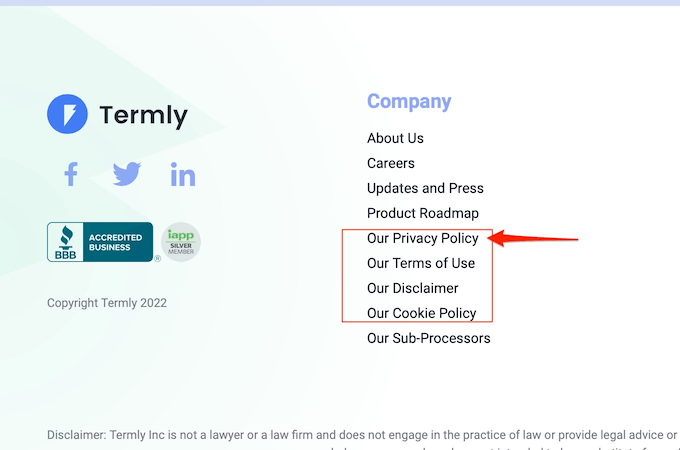
For these pages, you can use a generator like Termly, or Terms Feed. These will give you templates that you can use and edit. However, as a disclaimer, these are not the same as getting official pages drawn up by a lawyer. To ensure your legal pages are correct, you should always consult a legal professional.
Once you’ve set your legal pages up and created clearly visible page links, you can move on to the last step.
Step 10: Set Up Your Social Media
Once you’ve set up your blog, you can set up social media accounts using your blog name.
We recommend setting up business accounts from the start, as these will let people know you are a blogger and make it easier for you to analyze your audience. Instagram and TikTok will probably be where most of your audience is hanging out if you are a lifestyle blogger, but there’s no harm in setting up a Twitter or a Facebook, too.
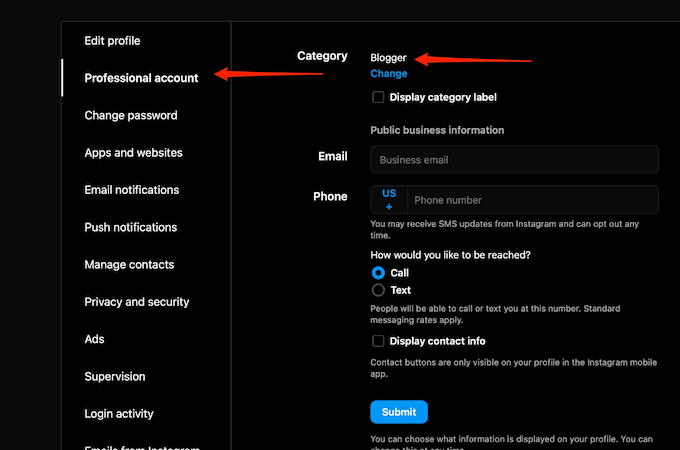
Once you’ve set up your site, you can add your domain to your bio and even an email address so people know how to contact you for partnerships or media inquiries.
Once you have set up your socials, you can publish and promote your first few pieces of content. You’ve finally finished setting up your blog, and now you just get to move on with building an audience and creating content!
Final Thoughts About Starting a Lifestyle Blog
You might hear a lot of people saying that lifestyle blogs are hard to start, but they are interesting, fun, and rewarding.
Lifestyle blogs can also be easy to monetize, as so many brands can sponsor or partner with your content, and you have access to a broad audience. Just follow our steps to get the foundations for your blog right, and you should have no trouble transitioning your blog into a side hustle, or even a career, in the future.
